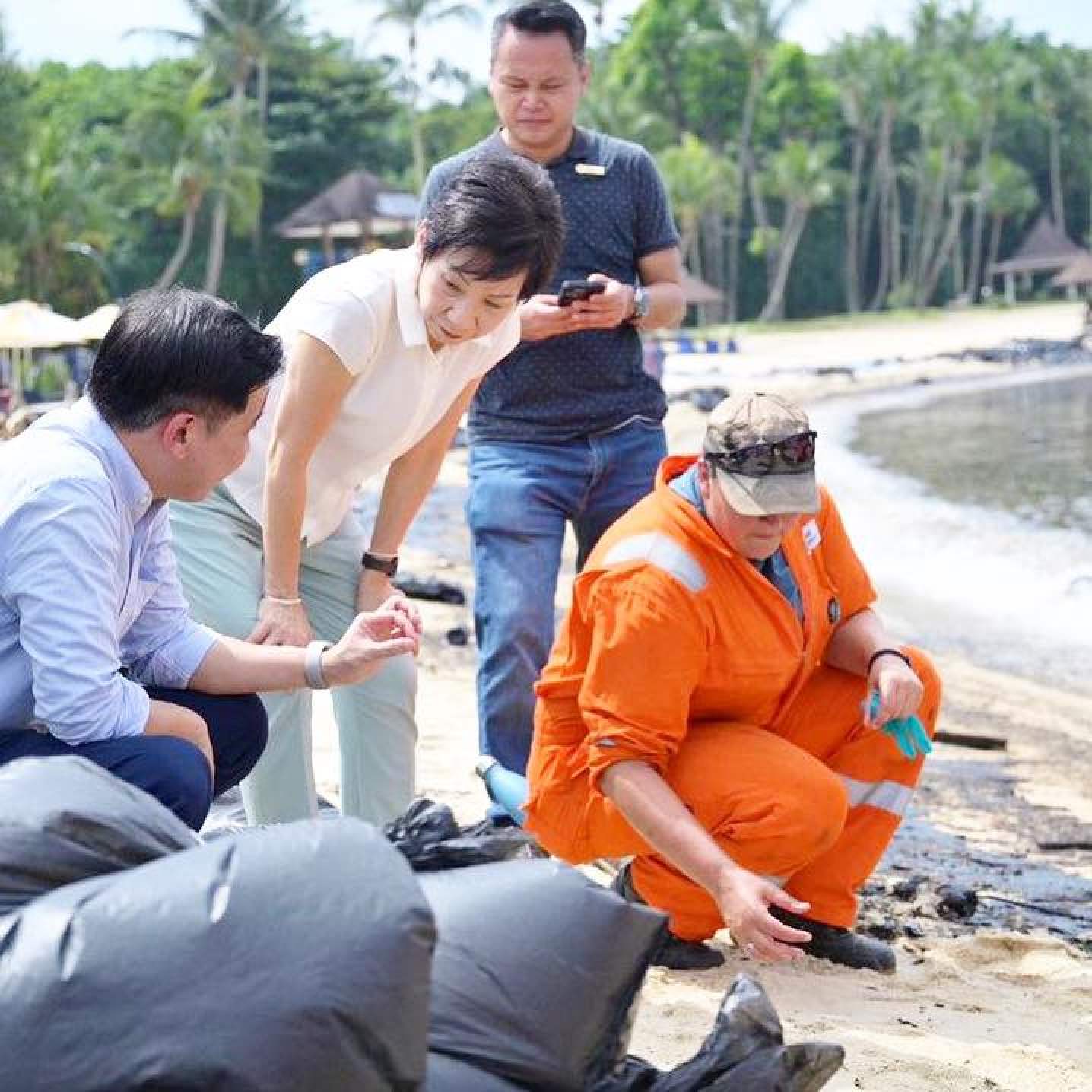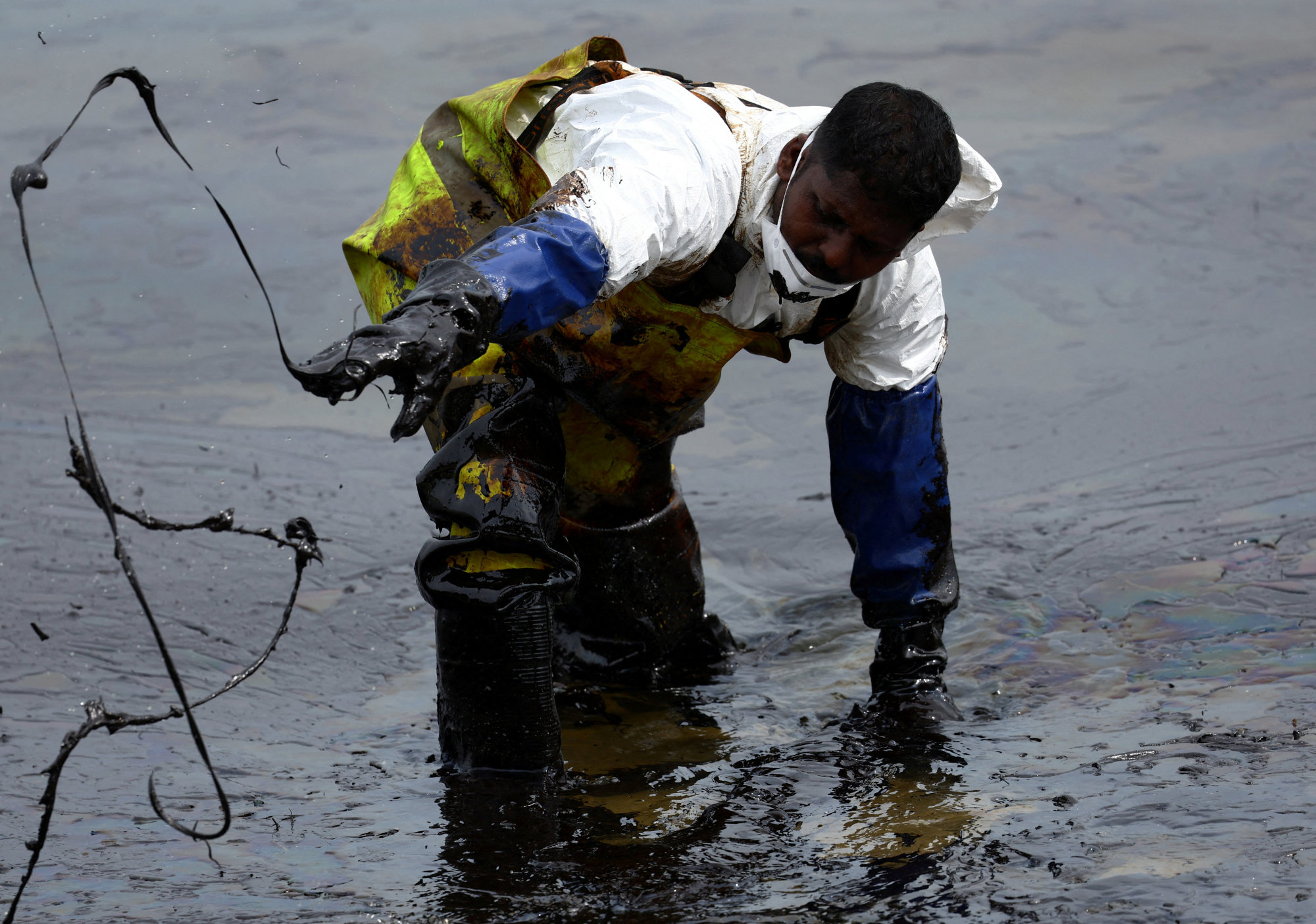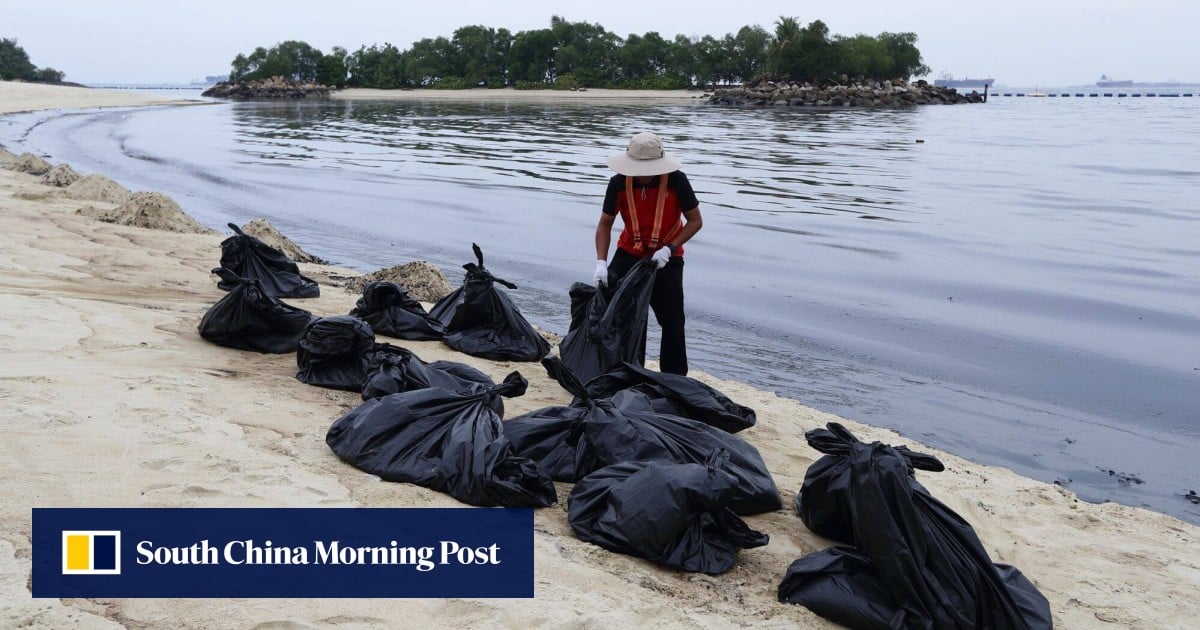Over the next few days, oil washed up along several beaches including Sentosa, East Coast Park, and Labrador Nature Reserve, as well as beaches at St John’s, Lazarus and Kusu islands. Oil slicks were also spotted at Marina South Pier.
Fu said that more than 700 cleaning personnel have been deployed and much of the oil on beachfronts has been cleaned up.
“About 550 tonnes of oil-soaked sand and debris from the affected beaches has been removed,” she added.
More than 3,400m of booms have also been deployed to prevent oil from being washed ashore or into inland canals.

“This effort would not have been possible without the tireless and coordinated efforts of our cleaning personnel from agencies and their service providers,” Fu said.
Fu said that clean-up efforts will be entering the next phase.
“The first phase of the clean-up focused on removing the oil slicks and contaminated sand from the surface of the affected beaches and deploying booms to avoid further contamination,” she said.
“This is making good progress and approaching completion.”
In a joint statement on Monday by seven agencies involved in the oil clean-up effort – such as the Maritime and Port Authority (MPA) and the National Environment Agency (NEA) – they said that based on satellite and drone images, no oil slick along East Coast and Changi has been observed since June 18.
“The bulk of oil-soaked sand has been removed from most of the affected public beaches, with the exception of Tanjong and Palawan beach at Sentosa,” said the agencies.
Fu said the next phase will be “more complex in nature” and focus on difficult-to-clean areas like rock bunds, breakwaters, and oil trapped deeper in the sand.
This is not straightforward as such places are not as accessible as beach shorelines and their surfaces are uneven.
“Oil that has slipped into the boulder crevices needs to be thoroughly flushed out … We want to minimise the oil flushed out from contaminating other areas,” said Fu.

“We are also mindful of keeping our workers safe as they operate over rocky terrain which can be uneven, hard to reach as they are sea-facing, and very slippery.”
She added that agencies will test out various cleaning methods to find the most suitable one for respective sites and refine their operations as they go along.
Clean-up operations commenced on the rock bunds at Siloso Beach on June 21. In the coming weeks, similar operations will be carried out at Sentosa Cove, Labrador Nature Reserve, and East Coast Park.
“We expect to take around three months to complete this next phase of cleaning, after which we will progressively reopen affected public areas,” said the minister.
“For less affected areas, we hope to open earlier.”
Sea activities will only resume when the water quality is assessed to be safe for primary contact activities.
For biodiversity sensitive sites, more time will be needed to assess the impact on wildlife, said Fu.
She cautioned that the oil spill situation remains dynamic, and the public should be prepared for some uncertainty.

“It is possible for some stranded oil to resurface at a later stage … Oil that has resurfaced in one location can also flow to and affect other areas, carried by wind, current, and tide. This may affect the completion of cleaning,” she said.
Once specialised cleaning is done, there will be a final phase of cleaning, where beaches will be combed to remove “tar balls” – small blobs of coagulated oil in the sand.
The clean-up is likely to be done with rakes and sieves, rather than shovels, to avoid removing too much uncontaminated sand, said Fu.
While the first two phases of cleaning will not directly involve volunteers, there are plans to do so in the final phase.
“We are planning to involve volunteers working alongside our cleaning personnel so that we can relieve our workers and to accelerate the reopening of our beaches,” she said.
“We will ensure that this is conducted safely and that volunteers are properly equipped.”

